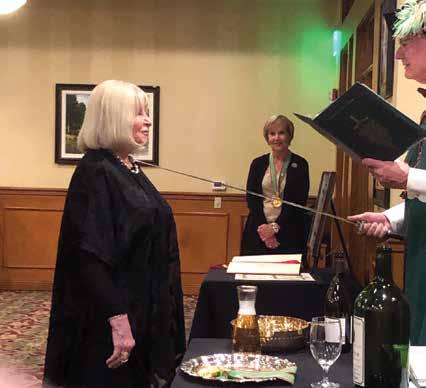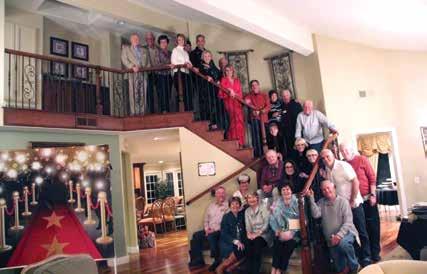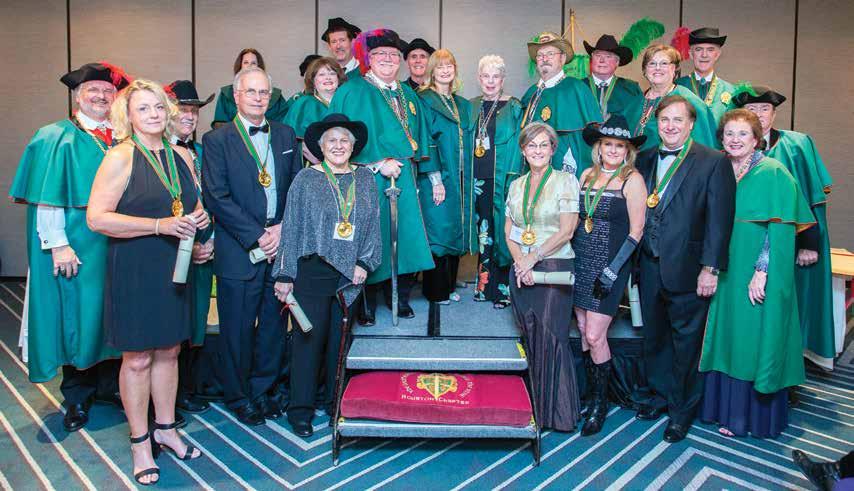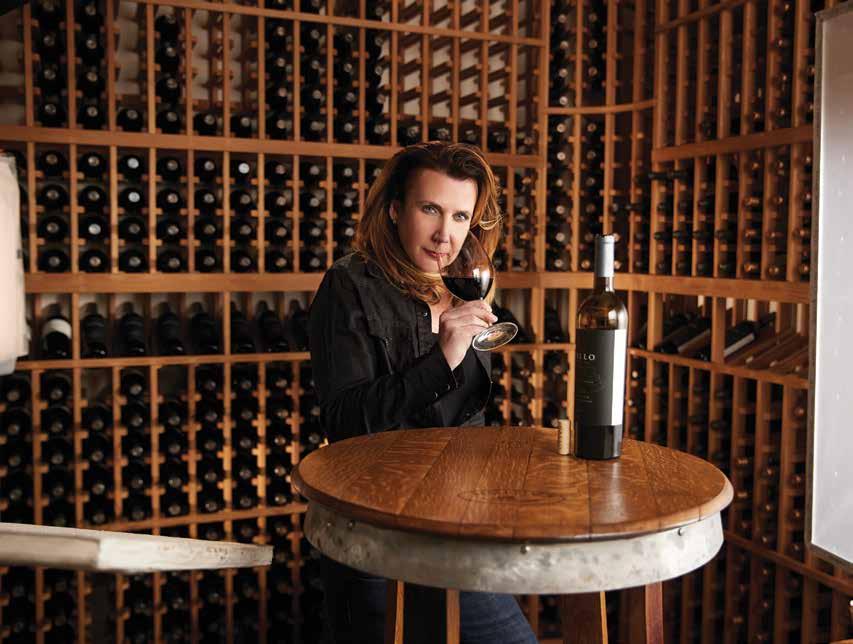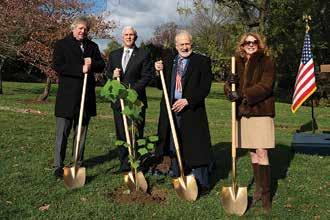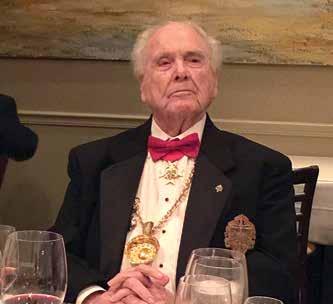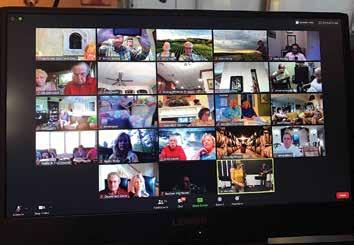
5 minute read
Chapters
Monterey Monterey
The Big Sur Foragers’ Festival
The Monterey chapter started the year in style with a chartered bus bringing 54 members and guests down the Pacific coast to The Big Sur Foragers’ Festival. We once again judged the food and wine offerings of a multitude of chefs and wineries. The two winning wines, as described in the local media were:
“Wines were also honored, with “Le Souvenir” 2017 Chardonnay by Paul Lato Wines taking home the top honor for white wines. The grapes came from the Sierra Madre Vineyard in Santa Maria, 4 acres of hand-selected grapes from 300 acres. It was aged in 75% new French oak and 25% neutral French oak. The grapes were harvested at 23 brix and ABV is 14.1%. Paul Lato said he used “yeast from the sky” or all-natural yeast. “The color was bright with beautiful clarity. It was well-balanced with excellent acidity. The nose was consistent with the experience in the mouth and had a lovely creamy texture,” wrote members of the Knights of the Vine, who served as judges.
The winning red was Ian Brand from I Brand and Family, a 2016 Grenache, Drossean vineyard, Chalone Appellation. “The epitome of a Rhone wine in the style of Gigoudes - complex, smoky with Mediterranean fruit,” the judges said.”
This was our fifth year in assisting the Big Sur Health center to clearly produce a great event!
Soon thereafter we were stymied by the Covid shutdown and have been biding our time to safely resume some small events. In the meantime, we look to our members for some history of our fine region and are pleased to include a profile of Master Knight Dick Nutter, a longtime member of our chapter, who shares some observations of the development of Monterey county as a wine region which we hope you will enjoy.

Reflections of the Monterey County Wine Grape Industry from 1971 to 1998
When I was appointed Monterey County Agricultural Commissioner in July 1971 neither I (nor anyone I knew) realized that we were entering into a dynamic new era of county agriculture. The wine grape industry had discovered that the county possessed the type of climate, soil and water to become a premium growing region. Research by University of California at Davis had given investors’ confidence to explore this region. The San Antonio and Nacimento Dams had developed and provided a consistent water supply.
James and Rachaelle Schultze from Windy Oaks pour at the Foragers’ Festival
The established vineyards were Almaden, Chalone, Paul Masson, Mirassou and Wente -- growing a total of 1,155 acres of grapes with a total gross value of $l.9 million dollars. The primary varieties grown were Cabernet Sauvignon, Pinot Noir, Zinfandel and Petite Sarah, while the white grapes were Chardonnay, Chenin Blanc and Riesling.
The advent of sprinkler irrigation made the bench land above the Salinas valley floor attractive for grapes and was sought by investors. Crop land which had produced sugar beets, lima beans, chili peppers and dry-farmed grain crops became attractive grape-growing acreage.
A change in the tax law allowed for the formation of limited partnerships which attracted nationwide attention and resulted in large acreage vineyards being formed. Many of the new vineyard owners were nonresidents which in turn required management companies to be established.
Myron & Jerry McFarland, Al Scheid, J. Lohr and others gained important growing information from established wine grape producers such as Peter Mirassou, Carl Wente, Jack Hays, Julio Gallo and others. Other pioneers of the industry were Rich Smith and Doug Meador.
In 1977, I was asked to become a member of a new organization called the Brotherhood of the Knights of the Vine. Commander Norman Gates was the originator of the group and William Cowan was the Vice Commander. Bill Cowan had just retired as Deputy Secretary of the State Department of Food & Agriculture and had formed the Monterey Peninsula Chapter, which I believe was one of the original chapters.
By this time the grape acreage in the county had increased to 33,655 acres which included non-bearing acreage with a total crop value of $26.8 million. KOV was attracting new members, including not only wine grape growers and major wineries but also food and wine critics like Robert Parker, authors, legislators and associated industry members. Many local professional and agricultural-related industries were becoming members and many interesting and fun events were held. For example, the 1978 Assemblage was held at the Carmel Mission with the induction of new members taking place in the Chapel. The trumpeters from the Monterey Symphony who greeted us were a special treat. At that event, I believe Brother Timothy of Christian Brothers winery became a new member. Another memorable event took place in 1980. A group of KOV members chartered a plane and flew to the Grand Canyon in Arizona to attend the first Assemblage of the new Arizona Chapter. We were totally unprepared for the snow storm that we encountered!
At this time the only American Viticulture Area in the county was called “Monterey.” Today there are nine -- Santa Lucia Highlands, Hames Valley, Chalone, Carmel Valley, Arroyo Seco, San Lucas and San Bernabe.
In the 80’s, the demand for grape phylloxera-resistant rootstock exceeded the supply during this time of expansion, so many vineyards chose to plant on their own root stock of the chosen variety. Although phylloxera was not present in the county at the time, it eventually became established and many vineyards required replanting on expensive resistant root stock. This was a major setback, and it took a number of years for the industry to recover.
Upon my retirement in 1998, the acreage had grown to nearly 40,000 acres with a gross value of $178 million. Now, the Santa Lucia Highlands Pinot Noir has become the most renowned of the wines produced in that AVA. Innovative growing methods, along with outstanding vintners, provide for the award winning wines.
Today, there are approximately 44,000 acres of grapes, producing a gross value of nearly $200 million. Like the wine industry, KOV has continued with new leadership, planning interesting events and inducting enthusiastic new members…and I am pleased to continue to be a part of this group.



